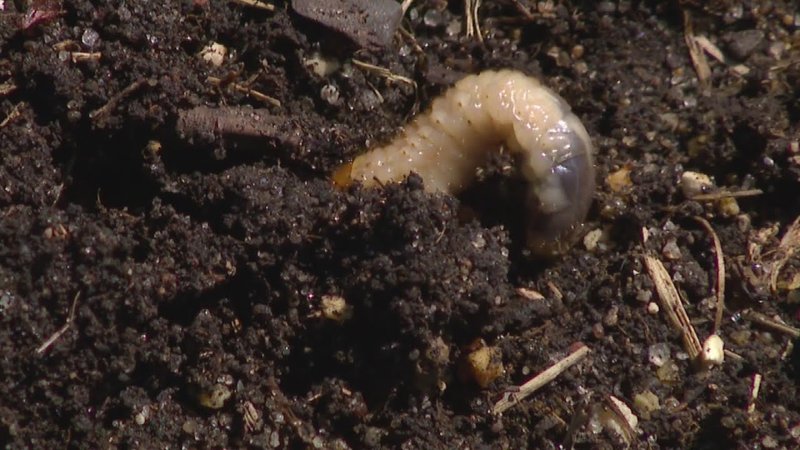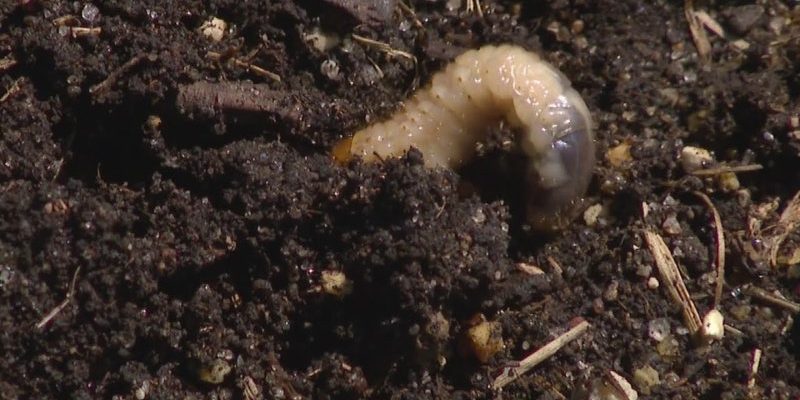
Imagine winter as a long, cozy nap for many insects, where they find comfort in the depths of the earth. Grub worms, specifically the larvae of beetles like the June bug, have their own unique way of coping with cold temperatures. As we dive into this topic, we’ll explore what actually happens to these little guys during the chilly months. Let’s clear up those winter mysteries surrounding grub worms and their hibernation habits!
What Are Grub Worms?
Grub worms are the immature forms of certain beetles, particularly the well-known June beetle. You might spot them in your garden as small, C-shaped, white larvae with a plump body. They often live in the soil, where they munch on grass roots, decaying matter, and sometimes even plant roots.
These worms play a significant role in the ecosystem. Essentially, they help break down organic materials, turning them into nutrients that enrich the soil. This contributes to healthy plant growth, which is vital for any garden. But while they seem harmless, too many grub worms can cause problems for lawns and gardens, leading to brown patches or dying plants.
Understanding Hibernation in Insects
Hibernation isn’t just for cute little bears; it’s a survival strategy for many insects too. When temperatures drop and food becomes scarce, insects enter a state of dormancy to conserve energy. During hibernation, they slow their metabolism, making it possible to survive without food for long periods.
Insects like grub worms can’t just throw on a sweater when it gets cold. Instead, they have adapted to survive in their environment. You might think of it as nature’s way of ensuring that life continues, even in the harshest of conditions. This is crucial, especially for species that need to thrive once the warmth of spring returns.
Do Grub Worms Hibernate?
Here’s the thing: grub worms do not truly hibernate in the way we traditionally think of it. Instead, they enter a state known as **diapause**. This is a kind of resting phase where their development is paused until conditions are favorable. In layman’s terms, it means they effectively “sleep” through the winter, but their bodies are still ready to wake up when spring arrives.
During this diapause, grubs burrow deeper into the soil where it’s warmer and protected from freezing temperatures. It’s like they’re pulling their blankets over their heads and curling up beneath the surface. They remain inactive but are very much alive, waiting for the right moment to resume their eating and growing when the weather warms up again.
How Do Grub Worms Survive the Winter?
Survival during winter is all about strategy for grub worms. They rely on several factors to make it through the harsh months. One key aspect is the depth at which they burrow. You’ll find that most grubs dig down about 6 inches below the soil surface, where temperatures are more stable and safe from freezing.
**Moisture** is another critical factor in their survival. The ground retains moisture, even in cold weather. This moisture helps keep the soil temperature slightly higher and provides a suitable environment for the grubs. So, while we might be shivering in our jackets, those little critters are snug as bugs underground.
Signs of Grub Damage in Your Lawn
If you’re wondering whether grub worms are causing trouble in your yard, there are a few signs to look out for. While grubs are burrowed away during winter, they can do a lot of damage to your lawn by munching on roots when they come back out in spring.
– **Brown Patches:** One of the first signs is patchy brown areas in your lawn. If the grass feels soft when you walk on it or pulls up easily, it could indicate grub activity.
– **Increased Animal Activity:** Birds and other animals digging for food can also point to a grub issue. If you see more feathered friends scratching around your yard, they might be on a grub hunt.
– **Wilting Grass:** Grass may start wilting and dying in certain areas, indicating that the roots have been chewed away.
If you notice these signs, it might be time to take action to protect your lawn from future damage.
Controlling Grub Worm Populations
If you find that grub worms are munching away at your garden, don’t worry! There are several ways to control their populations while keeping your garden healthy. Here are a few strategies:
1. **Natural Predators:** Encourage birds, beneficial insects, and other wildlife that eat grubs. Installing bird feeders or houses can attract birds, helping to keep grub numbers down.
2. **Milky Spore Disease:** This is a natural bacterium that targets grubs. It infects them and helps control their population. Applying it to your lawn can be an effective long-term solution.
3. **Organic Treatments:** There are various organic treatments available that can help control grubs without harming beneficial insects. Look for options that are safe and environmentally friendly.
4. **Regular Lawn Maintenance:** Keeping your lawn healthy through proper watering, aerating, and mowing can make it less attractive to grubs. A robust lawn can often withstand grub damage better than a stressed one.
So, do grub worms hibernate during winter? Not exactly—they enter a state of diapause to survive the cold months. They find shelter in the soil, waiting for warmer temperatures to wake up and resume their eating habits. Understanding how these little creatures survive helps us appreciate their role in the ecosystem and how to protect our gardens from their potential damage.
As winter approaches, remember that nature has its own ways of preparing for the cold. So, the next time you see a grub worm wriggling through your garden, take a moment to think about the tiny strategies they use to thrive. With a little knowledge and care, you can enjoy a vibrant garden come springtime!

